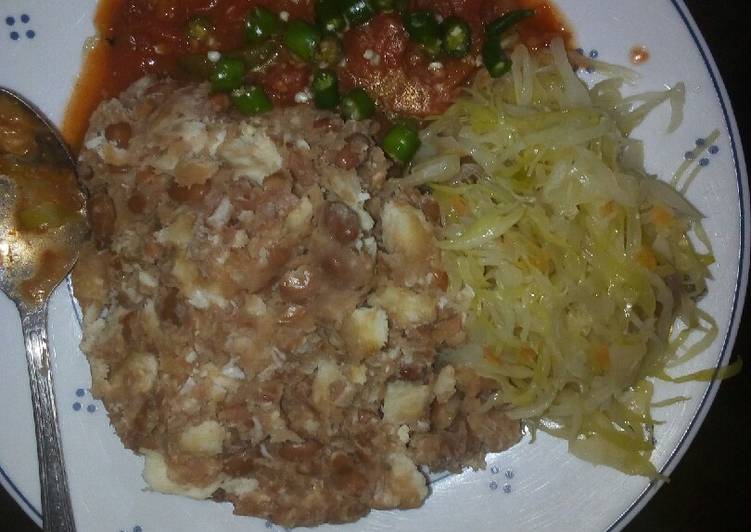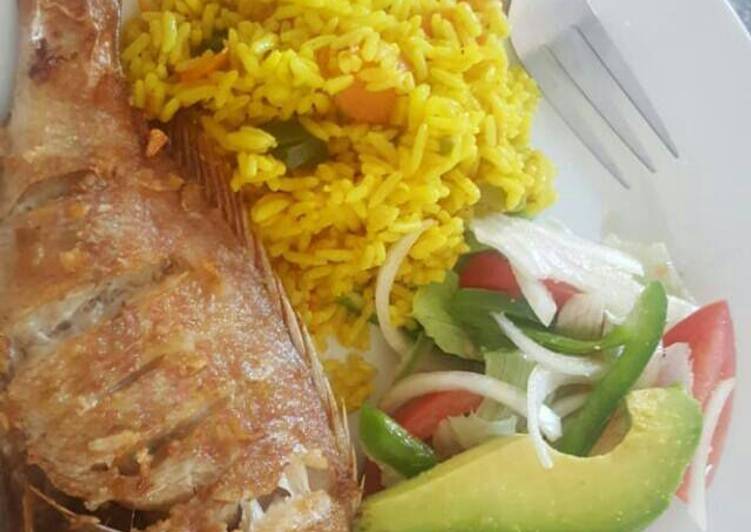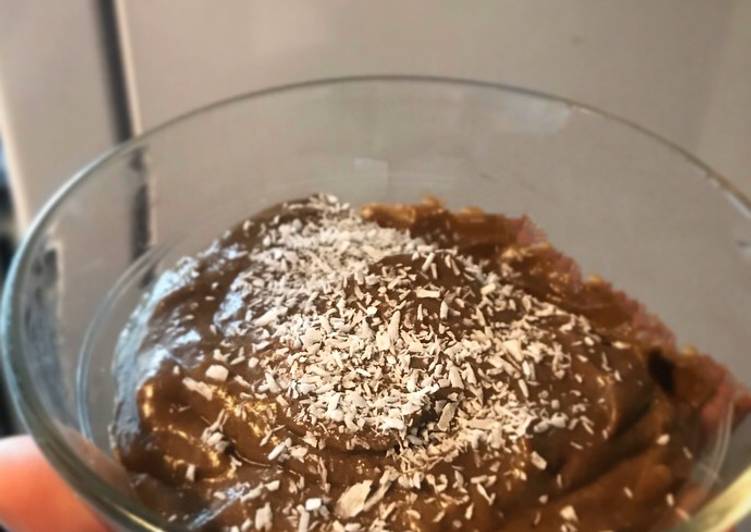
Hey everyone, hope you are having an incredible day today. Today, we’re going to make a distinctive dish, kimanga cha cassava. One of my favorites food recipes. This time, I am going to make it a little bit unique. This will be really delicious.
Kimanga cha cassava is one of the most favored of recent trending meals on earth. It’s simple, it’s quick, it tastes yummy. It is enjoyed by millions every day. They’re fine and they look fantastic. Kimanga cha cassava is something that I’ve loved my entire life.
Cassava Cake is a classic Filipino dessert made from grated cassava (manioc). Cassava is also known as kamoteng kahoy and balinghoy in the Philippines. Cassava starch is also used to make tapioca.
To begin with this recipe, we must prepare a few ingredients. You can have kimanga cha cassava using 4 ingredients and 4 steps. Here is how you can achieve it.
The ingredients needed to make Kimanga cha cassava:
- Get Soya Beans
- Prepare Cassava
- Get oil
- Prepare Salt
Cassava, therefore, will be a favoured source of cheap carbohydrates in the countryside and will also continue to serve as a food security crop. Manihot esculenta, commonly called cassava (/ k ə ˈ s ɑː v ə /), manioc, yuca, macaxeira, mandioca, aipim, and agbeli, is a woody shrub native to South America of the spurge family, Euphorbiaceae. Although a perennial plant, cassava is extensively cultivated as an annual crop in tropical and subtropical regions for its edible starchy tuberous root, a major source of carbohydrates. Cassava is a long tuberous starchy root that is an essential ingredient in many Latin American and Caribbean cuisines.
Steps to make Kimanga cha cassava:
- Boil beans until they are almost ready
- Add small pieces of cassava en salt boil until cassava are cooked.
- Mash the mixture of beans en cassava then add oil.
- Serve with vegetable en soup.
It is eaten mashed, added to stews, and used to make bread and chips. Cassava, also known as yuca, must be cooked or pressed before it's eaten, as it is poisonous in its raw form. of cassava stems as planting materials for subsequent seasons. Select and use improved, healthy, and pest/disease free cassava stems. Treat the stakes with available insecticides or fungicides by Cassava, tuberous edible plant of the spurge family from the American tropics. It is cultivated throughout the tropical world for its tuberous roots, from which cassava flour, breads, tapioca, a laundry starch, and an alcoholic beverage are derived.
So that’s going to wrap it up with this exceptional food kimanga cha cassava recipe. Thanks so much for reading. I am sure that you can make this at home. There is gonna be interesting food in home recipes coming up. Don’t forget to bookmark this page on your browser, and share it to your family, colleague and friends. Thank you for reading. Go on get cooking!

